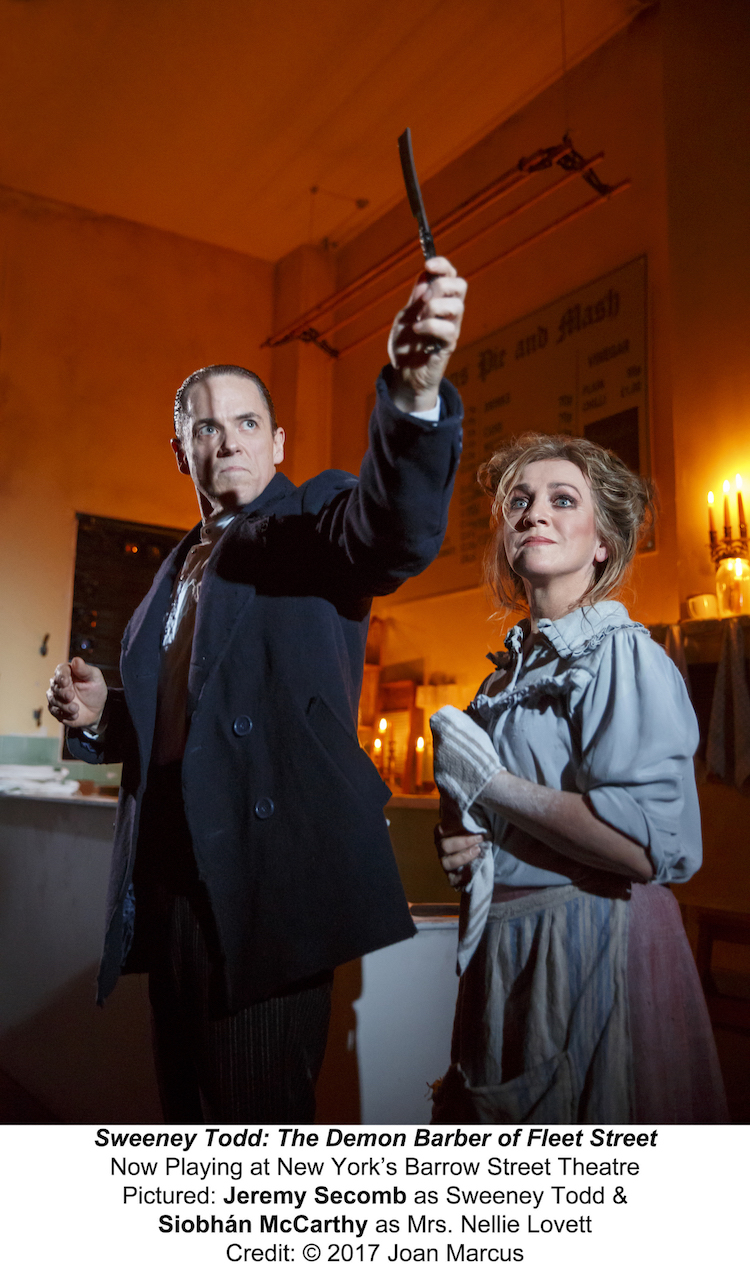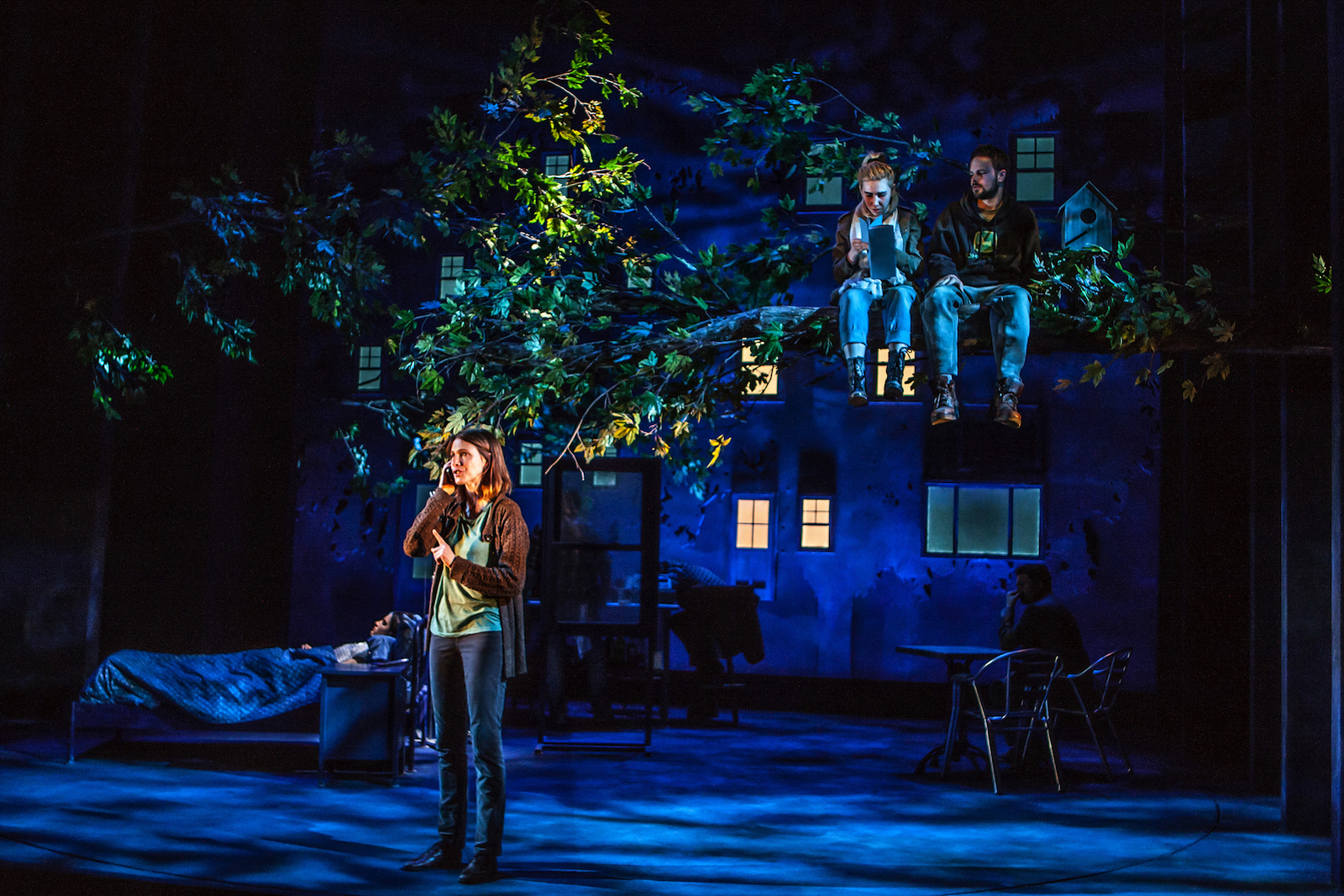

by Martha Wade Steketee
Repossession, privileged history, origin story, or folderol? An audience member at The Black Crook: An Original, Magical, and Spectacular Musical Drama at the Abrons Arts Center’s Underground Theater might think they’re poised to experience a riff on the first American musical, yet could be forgiven if they finally conclude that they’ve experienced all of the above.
Back in 1866, in a long-gone Manhattan performance venue called Niblo’s Garden, an unsuccessful bit of melodrama titled The Black Crook by Charles M. Barras was mashed together with music and dance as a business proposition, and in the process gained the reputation as the first piece of musical theater. Don’t look for an integrated book musical here. We’re talking about entertainment in a theater with a story, actors in costumes, musicians with instruments, and dancers dancing, at different times and for hours at a stretch—some say a performance was a five-hour endurance feat.
This current production, running through October 7, is in part a look at the 1866 original and its melodramatic story involving a damsel, an unappreciated artist, a villain and his nefarious assistant, and a randy maid (why not?) as well as assorted dancers and musicians. This new reimagining places that story in historical context of the people who created and financed the original as well as the characters in that original piece, in a contemporary scaled-back staging in which the performers sing, dance and play instruments as well as portray actors portraying characters in character. It’s a history lesson, a romp, and a reconstruction that attempts a lot and achieves quite a bit.
Earlier this year, the dramaturg and theater historian Alisa Solomon wrote an essay in The Nation entitled “More Repossession Than Revival” in which she analyzes several recent creations that attempt similar riffs on theater history that both evoke an original historical work of theater and stand on their own as unique creations. Solomon notes that Shuffle Along, or The Making of the Musical Sensation of 1921 and All That Followed, whose recent Broadway run concluded in July of 2016, revived pieces of the original 1921 score and staging of the musical Shuffle Along and also told the stories of the people who created it, both before and after the musical was originally staged. Solomon also discusses Indecent by Paula Vogel, an original work that imbeds Sholem Asch’s 1906 God of Vengeance tragedy in a new story about the writers, directors, and actors involved in the original productions in Yiddish and then English. For Solomon, these works belong “to an as-yet-unnamed but growing and revelatory category of theatrical works that investigate contemporary issues by reconfiguring old hits, now largely forgotten or deemed no longer stage worthy.”


The Black Crook: An Original, Magical and Spectacular Musical Drama follows in this new tradition with its deconstruction of an assembled historical theatrical creation as well as its backstory. The core original story of The Black Crook is set in Germany in the 17th century. Count Wolfenstein (Lizzie Hagstedt) wants to marry the village girl Amina (Alaina Ferris). Amina’s fiancée artist Rodolphe (Steven Rattazzi) is endangered by Amina’s foster mother Barbara (Kate Weber) who wants to benefit from a match between Alaina and the Count. Hertzog (Merlin Whitehawk), a crooked back practitioner of black magic, the “black crook” of the title, has made a pact with the Devil (Lizzie Hagstedt) that he can live forever if he provides a fresh soul every New Year’s Eve, and Rodolphe is his new contender. The fairy tale wraps up with Rodolphe discovering buried treasure, saving a dove who transforms into a Fairy Queen named Stalacta (Alaina Ferris)—stay with me here—who plays a key role in the resolution of the story in which demons are killed and Amina and Rodolphe are united forever.
The playwright Charles M Barras and story’s artist Rodolphe are portrayed by Steven Rattazzi (who was, intriguingly, also in the Vineyard Theatre’s production of Indecent). And so the cast lists fold and implode in deliberate multi-castings, and scenes from the play are interspersed with scenes of the business of putting on the play, with sudden jolts of dance breaks. Much competence and multidimensional dexterity is demonstrated by the members of the eight-member cast, from dance flexibility to musicianship to facility with presentational stylistic acting. One particular performer, Jessie Shelton, stood out as a musical theater charmer who could draw focus and delight on any size stage. Shelton’s playbill bio lists her as a “multi-disciplinary performer and artist,” and she winningly plays several second banana characters (maids and dancers and others) with humor and grace.
The eight performers of all shapes and sizes and styles cavort to direction by Joshua William Gelb and choreography by Kate Rose McLaughlin on a set designed by Carolyn Mraz that evokes a John Doyle approach to musical theater (e.g. his 2006 Company revival or the current The Color Purple) in which actors sing and play instruments on sets that aren’t realistic but suggestive. In the Gelb staging of The Black Crook, a world is evoked in a cello and who knows who will pick up that violin. Here there are songs that may have been part of the 1866 original (from playbill notes, the records are sketchy on this point) and a number of newly added numbers are sung, hummed and accompanied by piano, drum, violin, string base, harp, and who knows what else may have been around a corner or behind a piece of scenery. To add to the performance layers, all eight performers play multiple roles, evoking a constant sense of “who is that guy playing now?” and “wait is she the wife of the playwright or the damsel in the story in this scene?” adding to the sense of romp and adventure.
Whether this Black Crook achieves the aspirations of Shuffle Along and Indecent in their “revelatory category of theatrical works that investigate contemporary issues by reconfiguring old hits,” it is certainly true that this production frames and stages an essential part of American theater history that is worth a visit.
The Black Crook: An Original, Magical and Spectacular Musical Drama. Through October 7 at the Abrons Arts Center (466 Grand Street). www.abronsartscenter.org
Photos: Kelly Stuart






















